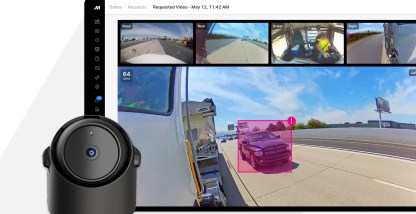Driver fatigue is dangerous, there’s no doubt about that. The FMCSA recognizes driver fatigue as one of the major causes of road accidents.
On May 17, 2017, in a session of Private Motor Truck Council of Canada (PMTC) in Alberta, Dr. Melissa Snider-Adler, chief medical review officer for DriverCheck, reiterated the link between road accidents and driver fatigue. She highlighted the fact that approximately 20% of vehicle collisions happen because of driver fatigue.
Dr. Melissa also explained that staying awake for 17 hours is the equivalent of having a blood-alcohol level of .05. The level increases to .1 after being awake for 24 hours.
According to a study conducted by the University of Pennsylvania in a collaborative sponsorship from FMCSA and American Transportation Research Institute, 28% of commercial truck drivers were found to be suffering from sleep apnea. People with sleep apnea suffer from fatigue, cardiovascular problems, and daytime sleepiness, among other things.
Dr. Melissa says, “Almost every aspect of your body can be affected by sleep apnea.”
Sleep apnea may also lead to drowsiness, which, in turn, increases the probability of road accidents.
Why is fatigue management so important?
Dr. Melissa Snider-Adler shared that for people to function properly, a consistent bedtime routine is important, along with a healthy diet and regular exercise. According to her recommendation, a minimum of 7.5 to 8.5 hours of sleep is necessary for maintaining a healthy lifestyle.
Fatigue management is important. It helps to improve the overall quality of service and reduce the risk of road accidents. Here are three major reasons why it’s imperative to have a strategy in place to manage driver fatigue.
Reduces safety risks
Drivers suffering from fatigue are more likely to doze off behind the wheel than drivers with a healthy sleep schedule. It can also result in delayed reaction time and bad hand-eye coordination.
If a company has a proper fatigue-management strategy in place, its drivers are going to be more focused and attentive on the road. As a result, fewer accidents are likely to happen, which improves the overall safety rating of the fleets.
Increased productivity
Sleep apnea and driver fatigue can negatively impact the overall productivity of commercial drivers. Addressing driver fatigue can help increase their productivity levels as well as improve their efficiency.
Cost reduction
Having your drivers treated for sleep apnea and fatigue can help reduce the claims for short-term disability and reduce overall health-plan costs. A U.S. trucking company managed to generate a return on investment in the form of savings on medical costs, accident reduction, and reduced turnover by a sleep-apnea screening and treatment program.
According to studies, the following changes were observed in drivers after being treated for sleep:
- Decrease in collisions by 30%
- Cost reduction at 48%
- Increase in driver retention rate by 60%
Marijuana legalization negatively affects truckers
Dr. Melissa also highlighted the fact that the legalization of marijuana isn’t a solution for truck drivers. Snider-Adler explained that although marijuana is sometimes prescribed for anxiety and insomnia, there is little evidence that it’s effective.
She opposed the use of drugs and pointed out the potential dangers of using marijuana in a workplace environment.
According to various studies highlighted by Snider-Adler:
- States like Colorado that legalized the use of marijuana saw an increase of 203% from 2006 to 2012 for people who tested positive for THC and were involved in fatal vehicle collisions.
- 5.5% of drivers tested positive for cannabis in a random roadside test conducted in B.C.
Dr. Melissa believes that companies should address drug use in the same way they would alcohol use. She recommends a zero-tolerance policy and that companies use random testing as a determining measure.
Driver safety and electronic logging devices
Mike Millian, president of the PMTC, highlighted the importance of electronic logging devices and said that although it may be frightening for some, implementation of ELDs will have its benefits.
He said, “I’m not going to lie to you, there will be pain. But once your drivers get used to it and accustomed to it, there will be time savings.”
Electronic logging devices, aka ELDs, are going to play a major role in the future of America’s trucking industry. FMCSA’s main goal is to increase driver safety and eliminate road accidents. The DOT’s ‘Road to Zero’ campaign is also about that. FMCSA estimates that the ELD mandate would be able to save 26 lives and prevent 562 injuries every year.
Request a free Motive ELD demo now if you are interested in the Motive ELD solution. We have several features, such as driver scorecards, driver alerts, vehicle diagnostics, and HOS alerts that can significantly improve the safety of your fleets.
If you have any questions, give us a call at 855-434-3465 or send us an email at support@gomotive.com.









